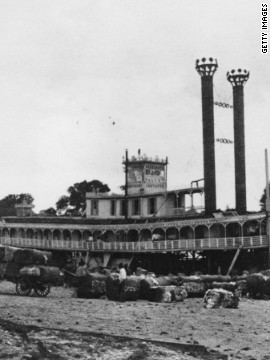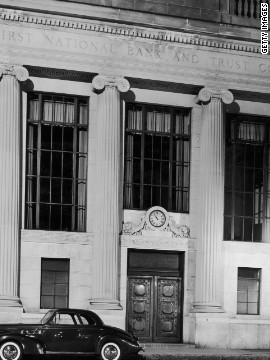- The Supreme Court will hear a case Wednesday on race in college admissions
- The court ruled in a 1950 case that a minority student should be admitted to a university
- Both cases -- more than half a century apart -- involved the University of Texas
- The plantiff in 1950 was black; the plaintiff in 2012 is white
"Ye shall know the Truth and the Truth shall make you free" -- from the Bible (John 8:32), inscribed on the facade of the the University of Texas at Austin Main Building ..."Equal Justice Under Law" -- inscription above the U.S. Supreme Court Building
(CNN) -- Heman Marion Sweatt and Abigail Noel Fisher both wanted to attend the University of Texas at Austin.
Both claimed their race was a primary reason for their rejection. Both filed civil rights lawsuits, and the Supreme Court ultimately agreed to hear their separate appeals -- filed more than half a century apart.
Their cases share much in common -- vexing questions of competition, fairness, and demographics -- and what role government should play when promoting political and social diversity.
But it is the key difference between these plaintiffs -- separated by three generations and a troubled road to "equality" -- that now confronts the nation's highest court: Sweatt was black, Fisher is white.
 Supreme Court hears affirmative action case
Supreme Court hears affirmative action case As justices hear affirmative-action case, students differ on diversity
Sweatt's 1950 case produced a landmark court ruling that set the stage for the eventual end of racial segregation in public facilities.
Fisher's case will be heard by the justices Wednesday. The question here could come down to whether a majority on the bench believes affirmative action has run its course -- no longer necessary in a country that has come far to confront its racially divisive past, a country that has a president who is African-American.
"There's a good chance that affirmative action, at least in the case of education, is on the chopping block," said Thomas Goldstein, a Washington appellate attorney and SCOTUSblog.com editor.
"The Supreme Court 10 years ago approved the use of race as a factor. But it's just changed. (Now-retired Justice) Sandra Day O'Connor isn't there and she was the decisive vote. And the current conservative majority is just very suspicious of the use of race in government decision-making."
At issue: do the flagship state universities' race-conscious admission policies violate the rights of white applicants?
The timing of the arguments is not lost in a presidential election year, as the justices wade gently into this divisive issue. The court and its recent rulings on health care reform and illegal immigration have ensured that the court -- however it decides the Texas appeal -- will be a major campaign issue. A ruling in this petition, however, will not likely be issued until at least early 2013.
_______________
Fisher individually sued the state university after her college application was rejected in 2008 when she was a high school senior in Sugar Land, Texas. She claims the individualized, discretionary admission policies violate her rights, and favor African-American and Hispanic applicants over whites and Asian-Americans.
The state of Texas provides for a hybrid admission policy: automatic acceptance to its university's main campus in Austin for in-state students finishing in the top 10% of their high schools, ensuring a measure of nonsubjective diversity. Three-fourths of the in-state student body gets in this way.
Fisher just missed that opportunity, so had to compete in a separate pool of students seeking to attend the highly competitive school. It is that a selection process that is before the court.
"If any state action should respect racial equality, it is university admissions," she and her lawyers told the high court in their written brief. "Selecting those who will benefit from the limited places available at universities has enormous consequences."
Supreme Court possibilities if Romney wins election
The school, with a large 52,000 student body, defends its "holistic" policy of considering race as one of many factors -- including test scores, community service, leadership and work experience -- designed to create a diverse campus.
"We must have the flexibility to consider each applicant's unique experiences and background so we can provide the best environment in which to educate and train the students who will be our nation's future leaders," said school administrators.
The Obama administration agrees, and is backing the school, saying to grow a nation built on differing complexions and backgrounds will depend on future leaders "who possess the understanding of diversity that is necessary to govern and defend the United States."
The NAACP Legal Defense and Educational Fund is among more than five dozen outside groups filing legal briefs in support of the school. Many of them worry the conservative high court majority is poised to strike down or severely limit affirmative action.
"A broad ruling could have very far reaching effects, and could possibly affect the pathway to opportunity for minority students at a range of universities," said Debo Adegbile, the group's acting president. "Not just at state universities, but at all institutions of higher education."
But groups opposed to the state's policies think the time has come to rethink how affirmative action will be applied in the future, if at all.
"Using race in admissions decisions, to achieve diversity, amounts to stereotyping people by their race," said Joshua Thompson of the conservative Pacific Legal Foundation, which filed a legal brief in support of Fisher. "Racial diversity in a student body does not guarantee a diversity of experience and perspectives. It is unrealistic and wrong to try to pigeonhole people by their race."
______________
A larger social debate is whether race-conscious policies serve their ultimate purpose -- to help minority students achieve success, especially in high-profile professional positions.
"What we're seeing now is affirmative action is backfiring quite badly," said Gail Heriot, a law professor at the University of San Diego and a member of the U.S. Commission on Civil Rights. She and two fellow commission members filed a brief, citing recent studies that race preferences are doing more harm than good, and suggesting there are fewer African-American professionals than would have been with race-neutral methods.
"The problem is what is called mismatch," said Heriot. "As a result of affirmative action, black students in particular, Hispanic students as well, are likely to go to a school where their entering credentials put them towards the bottom of the entering class," at top schools like Harvard or Texas. Their lower grades as a result, said Heriot, mean those students are much more likely to give up on the ambition to major in science, or go into medicine or the law.
Supreme Court possibilities if Obama is reelected
"It's heartbreaking," she said. "If only the students would go to the school where their entering credentials are pretty much in the middle or towards the top of that particular college."
Many social scientists and civil groups, including the NAACP, reject that analysis.
"I think those studies and arguments don't really jive with the real world," said Adegbile. "The admissions officers are best situated to make the determination and some of the tradeoffs, to have a mix of students that can accomplish all of the things that college and universities are engines to do."
________________
The high court has had an evolving record on the discretion of state officials to decide who attends their institutions.
The justices in 2003 said state universities can narrowly tailor their admissions policies to consider an applicant's race, to achieve a "critical mass" of minority students. But they reaffirmed existing limits -- bans on the use of quotas, extra "race" points in selective criteria, or "balancing" measures to reflect the larger population.
That landmark case from the University of Michigan is the subject of current but separate appeals over a state ballot measure designed to eliminate any racial criteria. A divided federal appeals court last year concluded the voter-approved ban on "preferential treatment" at public colleges and universities was unconstitutional, and "alters Michigan's political structure by impermissibly burdening racial minorities."
The Texas case is complicated over the issue of "standing" and whether Fisher should even be allowed to bring her lawsuit. She graduated this spring from Louisiana State University, where she went after being rejected by the University of Texas -- and school officials had argued she has no "live" controversy or claim necessary for the high court to intervene. They said her only "harm" would be trying to recoup nonrefundable application fees.
Through her lawyers, Fisher said she did not want to be interviewed by CNN.
In accepting the case, the high court made no mention of whether the standing issue would affect its ultimate ruling. The court also announced Justice Elena Kagan will not participate in the case since she apparently had been briefed on the issue as the Obama administration's solicitor general before joining the high court.
That leaves the possibility of a 4-4 ruling, meaning Fisher would not prevail, and leaving undecided the larger constitutional questions presented.
Fisher's attorneys made the strategic decision to sue as an individual instead of bringing a class-action discrimination claim, which would have made it easier in some respects. A co-plaintiff, Rachel Michalewicz, dropped out of the suit last year.
The university proudly touts its diversity: the latest freshman class is about 46% white, 25% Hispanic, 18% Asian, and 5% black.
_________________
The Michigan case was divisive in 2003, with Justice Sandra Day O'Connor the swing vote. "In order to cultivate a set of leaders with legitimacy in the eyes of the citizenry, it is necessary that the path to leadership be visibly open to talented and qualified individuals of every race and ethnicity," O'Connor said. "The (Michigan) Law School's educational judgment that such diversity is essential to its educational mission is one to which we defer."
But she left the bench in 2006, replaced by Justice Samuel Alito, who is expected to strongly question the Texas policy.
Justice Clarence Thomas was among four conservative justices who found the Michigan policies unconstitutional. "The Law School, of its own choosing, and for its own purposes, maintains an exclusionary admissions system that it knows produces racially disproportionate results. Racial discrimination is not a permissible solution to the self-inflicted wounds of this elitist admissions policy."
Despite that high court ruling, some states, including California, do not allow race considerations in college admissions. The issue now before an arguably more conservative high court is whether the Texas policies should be re-evaluated, as states have had nearly a decade to re-evaluate such diversity considerations.
_____________
A final word about Sweatt. When the Houston mailman applied to the University of Texas in 1946, no African-American at the time could be admitted to any law school in the state, and there were even no black-only law schools. So a purported "separate-but-equal" government policy was in fact "separate and non-existent."
School administrators cited the established white-only policies for their rejection -- "Texas' wise and long-continued policy of segregation," in the state attorney general's words -- and instead offered Sweatt an out-of-state scholarship. He refused and took his case to court.
By that time the state had agreed to create a blacks-only School of Law of the Texas State University for Negroes -- in Houston, not Austin -- but its implementation was delayed for many months. The high court unanimously found in favor of Sweatt -- concluding the separate school for a variety of quantitative and intangible reasons lacked "substantive equality." He became the first African-American ever ordered admitted to an all-white institution.
His legal victory was an important landmark -- a building block that culminated three years later in the 1953 Brown v. Board case, where the justices ordered a permanent end to state-mandated public, racial segregation.
Sweatt's personal victory was bittersweet. He entered the UT law school, but later dropped out, following ill health as well as hostility from white classmates. He died in 1982, and the Travis County civil courthouse in Austin was renamed in his honor.
The current case is Fisher v. University of Texas at Austin (11-345).



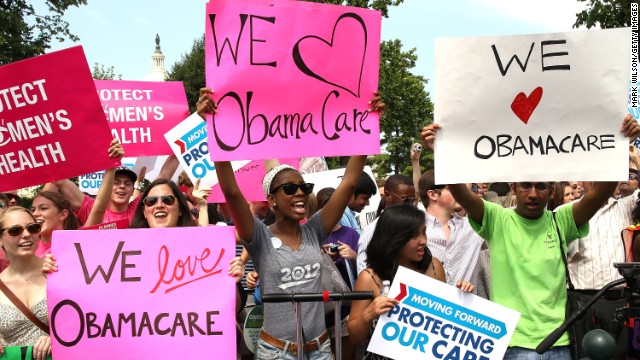 The Supreme Court upheld most of the Affordable Care Act, the Obama administration's health care reform law, on June 28, 2012. The decision could determine how hundreds of millions of Americans receive health care in the future. Here's a look at other landmark Supreme Court cases.
The Supreme Court upheld most of the Affordable Care Act, the Obama administration's health care reform law, on June 28, 2012. The decision could determine how hundreds of millions of Americans receive health care in the future. Here's a look at other landmark Supreme Court cases. 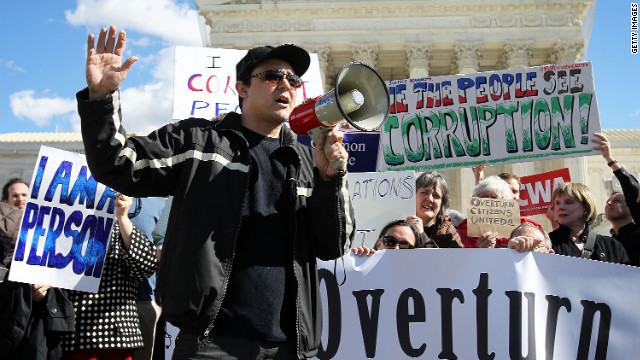 Activists rally in February 2012 to urge the Supreme Court to overturn its decision that fundamentally changed campaign finance law by allowing corporations and unions to contribute unlimited funds to political action committees not affiliated with a candidate.
Activists rally in February 2012 to urge the Supreme Court to overturn its decision that fundamentally changed campaign finance law by allowing corporations and unions to contribute unlimited funds to political action committees not affiliated with a candidate. 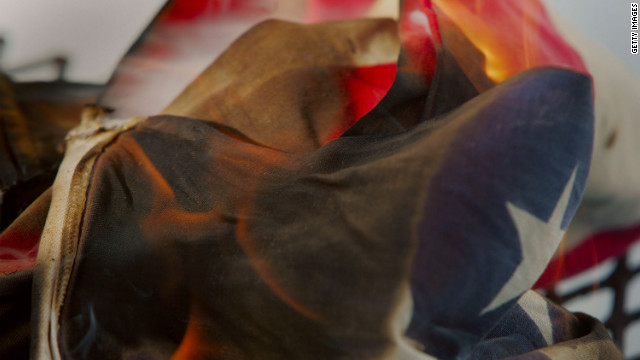 Gregory Lee Johnson lights a flag on fire to protest the Reagan administration and some Dallas-based corporations. Johnson was convicted of desecrating a venerated object but the court overturned the verdict on First Amendment grounds.
Gregory Lee Johnson lights a flag on fire to protest the Reagan administration and some Dallas-based corporations. Johnson was convicted of desecrating a venerated object but the court overturned the verdict on First Amendment grounds. 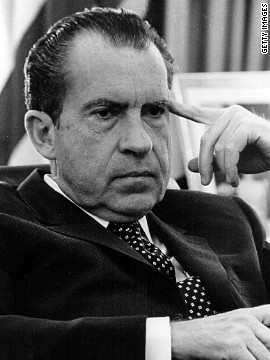
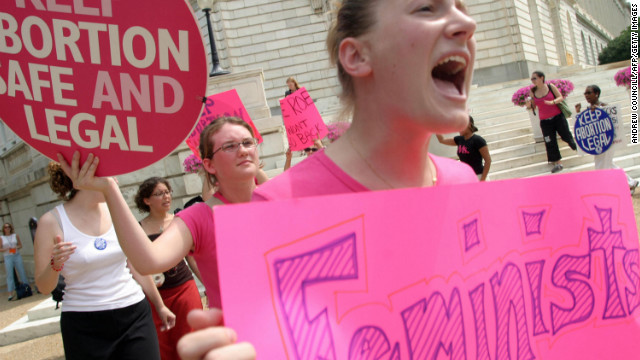 Wanda McCorvey, identified as "Jane Roe" sued the Dallas County, Texas, District Attorney Henry Wade over a law that made it a felony for her to have an abortion unless her life was in danger, citing her personal liberty. The court agreed with Roe and overruled any laws that made abortion illegal in the first trimester.
Wanda McCorvey, identified as "Jane Roe" sued the Dallas County, Texas, District Attorney Henry Wade over a law that made it a felony for her to have an abortion unless her life was in danger, citing her personal liberty. The court agreed with Roe and overruled any laws that made abortion illegal in the first trimester. 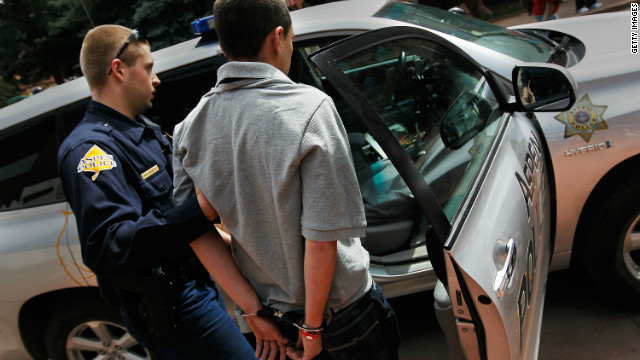 Ernesto Miranda confessed to a crime without the police informing him of his right to an attorney or right against self-incrimination. His attorney argued in court that the confession should have been inadmissible because police did not properly inform him of that right. The court agreed and the "Miranda Rights" got their name.
Ernesto Miranda confessed to a crime without the police informing him of his right to an attorney or right against self-incrimination. His attorney argued in court that the confession should have been inadmissible because police did not properly inform him of that right. The court agreed and the "Miranda Rights" got their name. 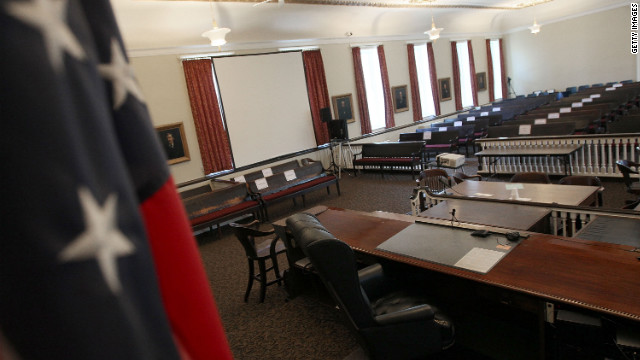 In 1961, Clarence Earl Gideon was convicted of burglary after he was denied the right to an attorney by a Florida court. Convinced that Constitution guaranteed him the right to an attorney, he wrote a note from his prison cell to the Supreme Court, which unanimously overturned the verdict.
In 1961, Clarence Earl Gideon was convicted of burglary after he was denied the right to an attorney by a Florida court. Convinced that Constitution guaranteed him the right to an attorney, he wrote a note from his prison cell to the Supreme Court, which unanimously overturned the verdict. 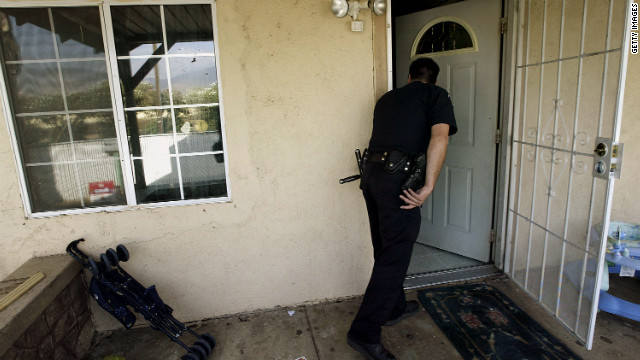 Dollree Mapp was arrested under an Ohio law for possession of obscene materials after police entered her home waving a piece of paper and calling it a warrant. The Court ruled that states could not violate the Fourth Amendment right to reasonable search and seizure, which rendered evidence gained that way inadmissible.
Dollree Mapp was arrested under an Ohio law for possession of obscene materials after police entered her home waving a piece of paper and calling it a warrant. The Court ruled that states could not violate the Fourth Amendment right to reasonable search and seizure, which rendered evidence gained that way inadmissible. 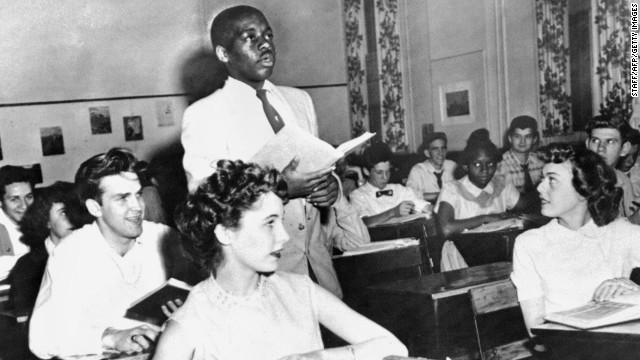 Nathaniel Steward, 17, recites his lesson surrounded by white classmates at the Saint-Dominique School, in Washington, the first school in which the Supreme Court ruling banning school segregation was applied.
Nathaniel Steward, 17, recites his lesson surrounded by white classmates at the Saint-Dominique School, in Washington, the first school in which the Supreme Court ruling banning school segregation was applied. 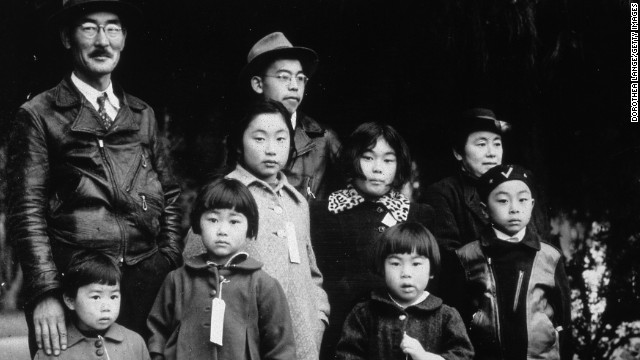 Fred Korematsu, a Japanese-American man, was arrested after authorities found out he claimed to be a Mexican-American to avoid being imprisoned in an interment camp during World War II. The court ruled that the rights of individuals were not as important as the need to protect the country during wartime.
Fred Korematsu, a Japanese-American man, was arrested after authorities found out he claimed to be a Mexican-American to avoid being imprisoned in an interment camp during World War II. The court ruled that the rights of individuals were not as important as the need to protect the country during wartime.  Homer Plessy, who was of mixed descent, said because he was 7/8 white and 1/8 black, he should be alowed to ride the whites-only car on a segregated railway in Louisiana. The court upheld a 1890 state statute requiring railway cars provide separate but equal accomodations.
Homer Plessy, who was of mixed descent, said because he was 7/8 white and 1/8 black, he should be alowed to ride the whites-only car on a segregated railway in Louisiana. The court upheld a 1890 state statute requiring railway cars provide separate but equal accomodations. 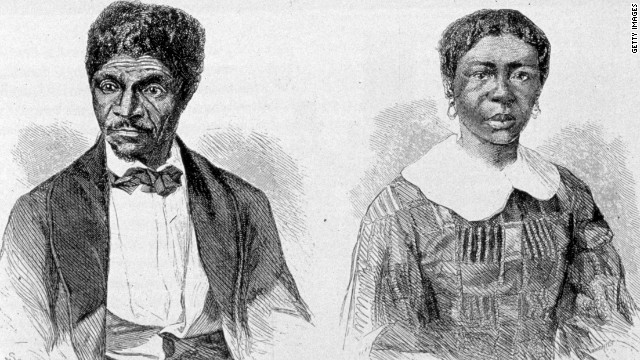 The front page of 'Frank Leslie's Illustrated Newspaper' reports the Dred Scott case, in which the court ruled that a slave could not gain his freedom by entering a state in which slavery was outlawed. The decision inflamed anti-slavery sentiment in the North.
The front page of 'Frank Leslie's Illustrated Newspaper' reports the Dred Scott case, in which the court ruled that a slave could not gain his freedom by entering a state in which slavery was outlawed. The decision inflamed anti-slavery sentiment in the North. 